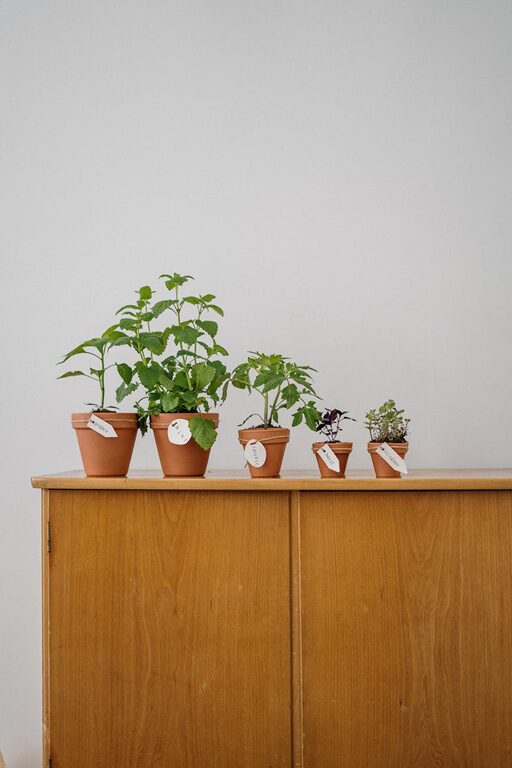Growing your own herbs indoors is a rewarding and practical hobby that brings fresh flavors right to your kitchen. Whether you have limited outdoor space, want fresh herbs year-round, or enjoy the calming presence of greenery, starting an indoor herb garden is both fun and manageable. This guide walks you through everything you need to know to create and care for your small indoor herb garden successfully.
Why Grow Herbs Indoors?
Indoor herb gardening offers several benefits:
– Freshness: Pick fresh herbs whenever you need them for cooking.
– Convenience: Grow herbs in small spaces like apartments or kitchens.
– Aesthetics: Add greenery and fragrance to your living space.
– Well-being: Gardening can reduce stress and create a nurturing hobby.
Choosing the Right Herbs for Indoors
Not all herbs thrive indoors, so start with easy-to-grow varieties. Some of the best options include:
– Basil: Loves warmth and sunlight, great for cooking.
– Mint: Hardy and spreads quickly, ideal for teas and desserts.
– Parsley: Tolerates moderate light, adds color and flavor.
– Thyme: Prefers bright sunlight, drought-resistant.
– Chives: Adapt well to indoor conditions and have mild onion flavor.
– Cilantro: Needs cooler temperatures and bright but indirect light.
Select herbs that suit your cooking preferences and the light available in your home.
What You Need to Get Started
Before planting, gather the right materials:
– Containers: Choose pots with drainage holes to prevent waterlogging. You can use individual pots or a container with compartments.
– Potting Mix: Use a high-quality, well-draining potting soil formulated for herbs or indoor plants.
– Seeds or Starter Plants: Beginners may find it easier to start with small plants, but seeds work well when given the right conditions.
– Light Source: Most herbs need 6-8 hours of sunlight daily. If natural light is limited, consider a grow light.
– Watering Can or Spray Bottle: For gentle watering.
Step-by-Step Guide to Planting Your Herb Garden
1. Choose a Location
Pick a bright spot near a south- or west-facing window if possible. Herbs need plenty of light to thrive. If lighting is scarce, use LED grow lights to supplement.
2. Prepare Your Containers
Fill your pots with potting mix leaving about an inch of space from the top. Moisten the soil slightly before planting.
3. Plant Seeds or Transplants
– For seeds: Plant according to the seed packet depth instructions. Usually, this is about twice the size of the seed.
– For starter plants: Gently loosen roots and place the plant into the soil, then press gently to stabilize.
4. Water Carefully
Water until the soil is moist but not soggy. Overwatering can cause root rot. Herbs generally prefer slightly drier conditions than overly wet soil.
5. Place Your Containers
Move your planted herbs to the chosen light spot. Rotate them weekly to encourage even growth.
Caring for Your Indoor Herb Garden
Light
Herbs typically require at least 6 hours of direct or bright indirect light daily. If natural light is insufficient, use a grow light positioned a few inches above the plants for 10-12 hours a day.
Watering
Check soil moisture regularly by inserting your finger about an inch deep. Water when the top inch of soil feels dry. Avoid letting pots sit in water.
Fertilizing
Use a balanced, water-soluble fertilizer diluted to half strength every 4-6 weeks to keep herbs healthy. Do not over-fertilize, as this can affect the flavor.
Pruning and Harvesting
Regularly pinch off the tips to encourage bushy growth. Harvest leaves as needed, but avoid removing more than one-third of the plant at once to prevent stress.
Pest Management
Watch for pests like aphids or spider mites. If detected, wipe leaves with a damp cloth or spray with a mild soapy water solution.
Troubleshooting Common Issues
– Leggy plants: Not enough light; move to a brighter spot or add grow lights.
– Yellow leaves: Overwatering or poor drainage; check moisture and pot drainage.
– Slow growth: May need more light, fertilizer, or warmer temperatures.
– Drooping leaves: Could be underwatering or heat stress; adjust watering and placement.
Tips for Success
– Rotate your pots to ensure even light exposure.
– Keep herbs away from cold drafts or heating vents.
– Use separate pots for herbs with different watering needs, like basil (needs more water) and thyme (likes drier soil).
– Experiment with containers that add personality to your space while maintaining functionality.
Conclusion
Starting a small herb garden indoors can be a delightful and practical way to enhance your home and cooking. With the right light, watering routine, and a little care, you can enjoy fragrant, fresh herbs all year round. Whether you are a seasoned gardener or a complete beginner, these simple steps will help you grow a thriving indoor herb garden that nourishes both body and soul.
Happy gardening!



